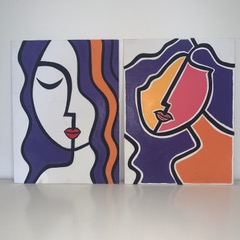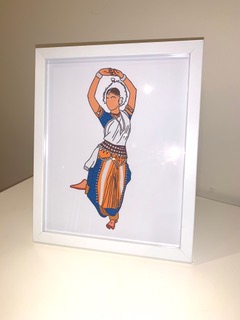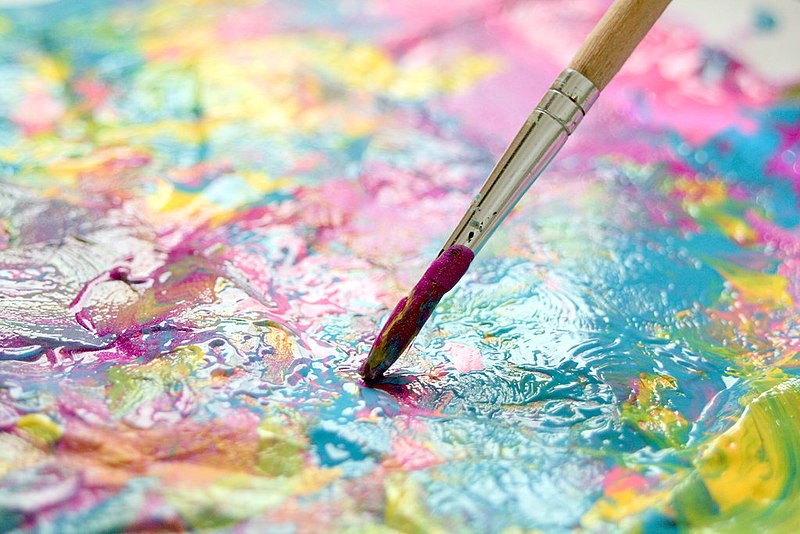When the second lockdown began, I found myself with a world of extra time. Usually I’d fill it with hours spent at work or university. Watching YouTube for inspiration and guidance, I decided to embrace my creative side and began painting and making macrame planters and coasters. So far, it’s helped me to feel inspired and fulfilled spiritually. Working with each piece, I feel a sense of calm and control. The process is quite relaxing and meditative for a prolonged period of time, taking me away from the stress of the day.
The pandemic and subsequent lockdowns have created uncertainty and anxiety in Australia. A study based on 3,200 participants by the Australian National University showed that 47% of Australians felt that their stress levels had worsened over the course of the spread of COVID-19. This equates to almost one in two people.
For me, craft has been an effective and beneficial way to alleviate stress. There’s a whole school of thought about the potential of arts and crafts to sooth mental distress, which has become known as art therapy. Art therapy is thought to improve communication and concentration, as well as assisting in reduce feelings of isolation. In 1942, British artist Adrian Hill coined the term “art therapy” after discovering that there were positive health benefits to practicing art while recovering from tuberculosis. Although formal classes weren’t existent yet, many writers on mental health in the 1940s began to describe their treatment with patients as “art therapy”.
Art therapist Dr Libby Byrne worked in a palliative care setting for many years, and says she was struck by the amount of people who in their last weeks of life, became open and eager to give artistry a go.
According to Dr Byrne, creativity is an “opportunity to engage with the kind of risk that feeds the soul and moves us toward possibility”.
“When they encountered the resources, the time, and a supportive person to help them in palliative care, people often thought that they had nothing to lose and everything to gain by taking the risk.” Dr Byrne told upstart.
The philosophy of art therapy is that creating art will assist in slowing down stressful situations, and help to explore what we may be experiencing.
So, it’s likely that you have found yourself with a world of extra time throughout mid-2020. But the question is: how and where do you start to nurture your artistic side?
Dr Byrne suggests that beginning with a simple but nostalgic art expression technique will help you begin your journey to freeing yourself creatively.
“Collage is a great way to begin if you are feeling trapped. It may be a collage of photographs that you have taken,” she said.
“Looking back over photographs that you have taken with your phone through the week and selecting those that speak clearly to you of something that sparks your imagination.”
With art therapy, you don’t need to be the world’s next Da Vinci, and you don’t have to stress and criticise your creative abilities. According to a recent journal of the American Art Therapy Association, even 45 minutes of art making and imagination can improve your stress levels.
“The biggest barrier for people who are new to the creative journey is the narrative that they hear in their own minds regarding what they can and can’t do,” Dr Byrne said.
“To shift this narrative, people need to begin to trust themselves in responding to their own desire to begin developing creativity.”
Artist and owner of Instagram abstract art page @facesandwhatnot, Ash Vats, says that her artistic abilities came easily after she was searching for something “productive” to do in the lockdown.
“I was at Officeworks and there were some brushes and paints on sale, so I thought ‘oh why not’, and bought it,” Vats told upstart.
“I thought that doing something creative during such an uncertain time would be a good distraction, and I’ve always loved working on a project for a while and being able to see an end product.”
Studies have shown that creativity and producing art stimulates the release of dopamine. This chemical is released in the brain when we do something that is pleasing or enjoyable, consequently meaning that we feel happier. A rise in this neurotransmitter can be very beneficial for our health when struggling with stress, anxiety or depression.
Not everyone is going to want to share their work publicly or exhibit their creation. However, with isolation keeping moneymaking to a minimum for many, the option to sell work has become a welcomed and joyful business pathway.
Vats launched her own Instagram-led business after the very first lockdown began in Melbourne, since proving her work to be popular within the community.
“It’s pretty cool to see something that you’ve created up on someone’s wall or making such a personalised gift. I think I get so surprised because before 2020 I had never painted or picked up a brush, so it’s pretty cool to discover my own little secret talent.”



“I recently had a client who had told me that [Vat’s work] was very special, as a friend in the photo had recently passed away; so I feel super grateful that people are trusting me with really important memories and that I’m able to do them justice.”
As worrying as the thought of creating art can be if you’ve never explored your own ability, Dr Byrne suggests; “take the risk – let go of fear – and allow your imagination to feed your soul”.
And, whenever we may be released from this lockdown, the arrows of research around stress point to the positive potential of art therapy as a coping tool at any point in life. It may just be the thing that life was missing before lockdown.
Article: Madisson Ball is a second year Media and Communications (Journalism) student at La Trobe University. You can follow her on twitter @MadissonBall.
Photo: Art As Therapy.jpg by Hill Sarah Louise available HERE and used under a Creative Commons Attribution. The image has not been modified.







